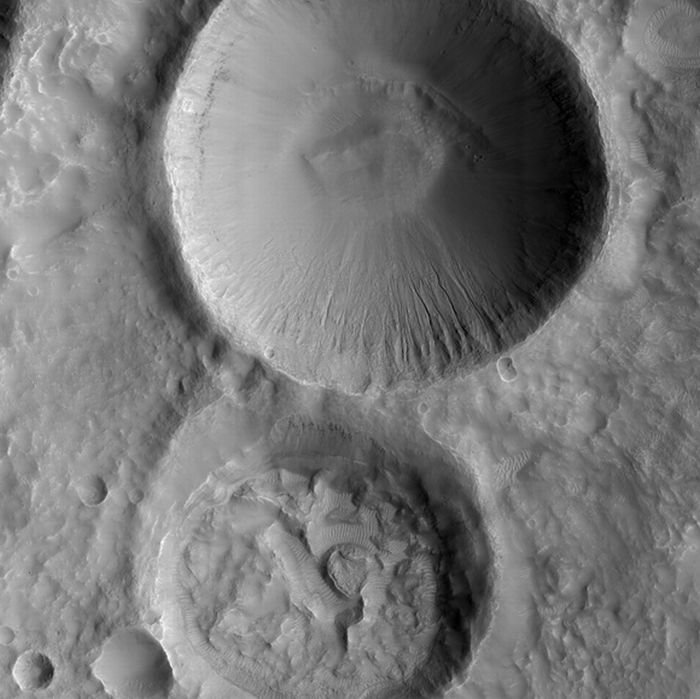|
|
Mars Surface
|
Mars is the fourth planet from the Sun in the Solar System. The planet is named after the Roman god of war, Mars. It is often described as the "Red Planet", as the iron oxide prevalent on its surface gives it a reddish appearance. Mars is a terrestrial planet with a thin atmosphere, having surface features reminiscent both of the impact craters of the Moon and the volcanoes, valleys, deserts, and polar ice caps of Earth. The rotational period and seasonal cycles of Mars are likewise similar to those of Earth, as is the tilt that produces the seasons. Mars is the site of Olympus Mons, the highest known mountain within the Solar System, and of Valles Marineris, the largest canyon. The smooth Borealis basin in the northern hemisphere covers 40% of the planet and may be a giant impact feature.
Until the first flyby of Mars occurred in 1965, by Mariner 4, many speculated about the presence of liquid water on the planet's surface. This was based on observed periodic variations in light and dark patches, particularly in the polar latitudes, which appeared to be seas and continents; long, dark striations were interpreted by some as irrigation channels for liquid water. These straight line features were later explained as optical illusions, though geological evidence gathered by unmanned missions suggest that Mars once had large-scale water coverage on its surface. In 2005, radar data revealed the presence of large quantities of water ice at the poles, and at mid-latitudes. The Mars rover Spirit sampled chemical compounds containing water molecules in March 2007. The Phoenix lander directly sampled water ice in shallow Martian soil on July 31, 2008.
Mars has two moons, Phobos and Deimos, which are small and irregularly shaped. These may be captured asteroids, similar to 5261 Eureka, a Martian Trojan asteroid. Mars is currently host to three functional orbiting spacecraft: Mars Odyssey, Mars Express, and the Mars Reconnaissance Orbiter. On the surface are the two Mars Exploration Rovers (Spirit and Opportunity) and several inert landers and rovers, both successful and unsuccessful. The Phoenix lander completed its mission on the surface in 2008. Observations by NASA's now-defunct Mars Global Surveyor show evidence that parts of the southern polar ice cap have been receding.
Mars can easily be seen from Earth with the naked eye. Its apparent magnitude reaches −3.0 a brightness surpassed only by Venus, Jupiter, the Moon, and the Sun.
|
|









